I'm creating a language app that currently only features Mandarin Chinese and Spanish.
Currently, I have self-created dictionary simply loaded as JSON without storing in the DB, but I've found full downloadable dictionaries, such as CEDICT for Chinese to do the definitions for me. That being said, this file is 115k rows long, with 6 columns per row.
I also need to do this for Spanish, and then every other language I plan on including.
Notes:
- MySQL DB
- Laravel ORM (PHP)
That being said, what's the best way to store this data?
I'm assuming as separate tables, dictionary_zh, dictionary_es, but I could also store each dictionary in a dictionary table, with an added column for locale and query based on that. This SO answer states that 1m records isn't "too much" for a table to handle, it simply defines on how you index the table.
Btw, anyone have a recommendation for a good downloadable Spanish - English dictionary?
Note: I'm downloading the dictionary and cutting it up into something I can load into a CSV
Traditional Simplified Pinyin Meaning Level Quest
佟 佟 Tong2 surname Tong 1 2
...
I'm translating it by simply passing in the identifying character, in this case佟, and grabbing its Meaning.
